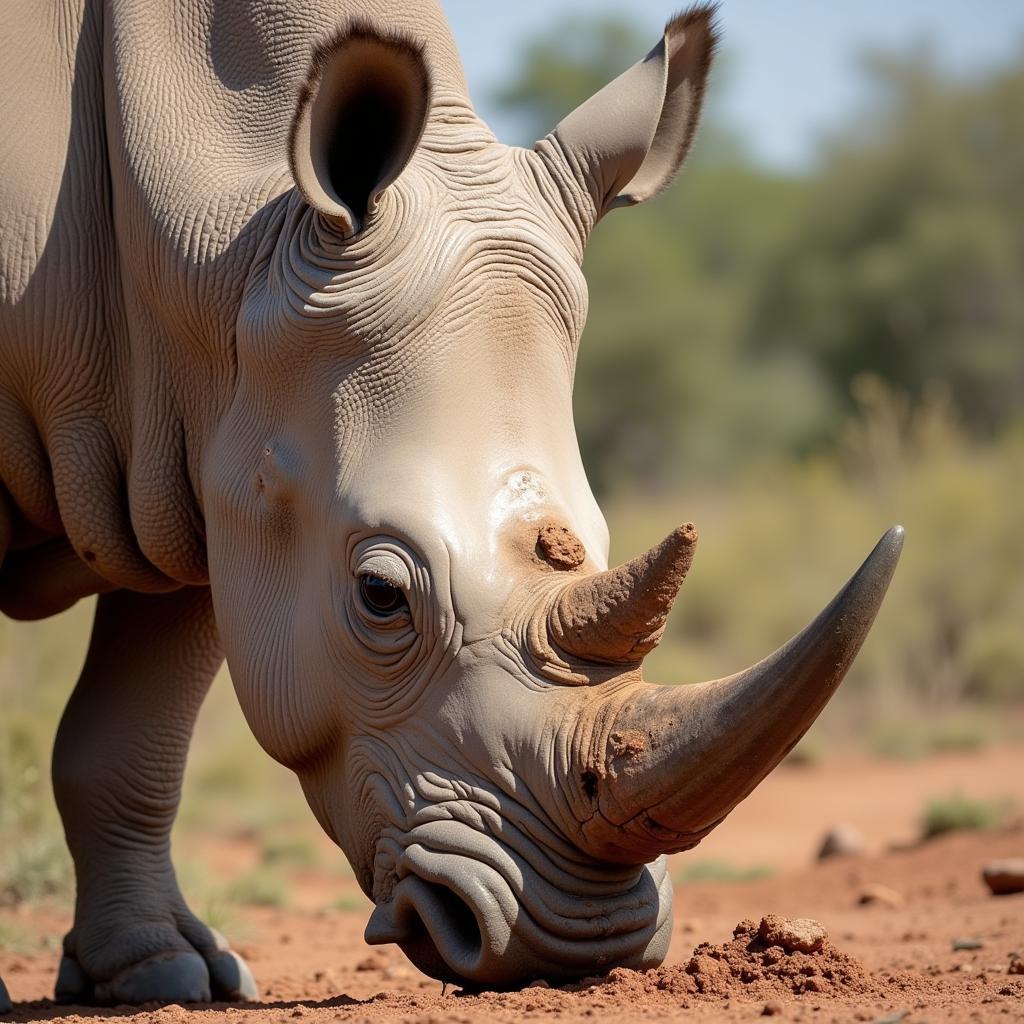Rhino poaching is a critical issue that has driven these magnificent creatures to the brink of extinction. Raising awareness about the devastating effects of this illegal trade is crucial for their survival. A well-planned campaign can educate the public, influence policy changes, and mobilize support for conservation efforts. This article explores the essential steps in conducting an effective campaign to combat rhino poaching and protect these iconic animals for generations to come.
Understanding the Crisis: Why Rhino Poaching Demands Urgent Action
Rhinos, specifically the black and white rhinoceros species, are under immense threat due to poaching. Their horns, made of keratin (like human fingernails), are highly valued in some cultures for their purported medicinal properties, although scientifically unfounded. This demand has fueled a lucrative black market, leading to a surge in poaching that decimates rhino populations across their natural habitats in Africa and Asia.
Crafting a Powerful Campaign Message: Connecting with Your Audience
An impactful campaign hinges on a clear, concise, and emotionally resonant message. It should answer the “why” – why should people care about rhino poaching? Focus on the devastating consequences:
- Extinction: Highlight that rhinos face an imminent threat of extinction if poaching continues unabated.
- Ecological Impact: Emphasize the crucial role rhinos play in their ecosystems and the cascading effects of their loss on biodiversity.
- Human Cost: Illustrate how poaching fuels organized crime, destabilizes communities, and endangers the livelihoods of those dependent on wildlife tourism.
Choosing Your Target Audience: Tailoring Your Message for Maximum Impact
Effective campaigns target specific audiences with tailored messages. Consider these groups:
- General Public: Raise awareness through social media campaigns, educational materials, and public events.
- Policymakers: Advocate for stricter anti-poaching laws, increased enforcement, and international collaboration to dismantle trafficking networks.
- Local Communities: Engage communities living near rhino habitats by providing alternative livelihood opportunities and empowering them as conservation stewards.
Selecting Effective Communication Channels: Reaching Your Audience Where They Are
Utilize a multi-pronged approach to reach your target audiences:
- Social Media: Leverage the power of platforms like Instagram, Facebook, and Twitter to share compelling stories, images, and videos.
- Traditional Media: Collaborate with journalists and news outlets to disseminate your message through press releases, articles, and interviews.
- Educational Programs: Develop engaging presentations, workshops, and school programs to educate younger generations about rhino conservation.
Engaging Your Audience: Creating Meaningful Interactions
Encourage active participation to deepen the impact of your campaign:
- Online Petitions: Mobilize support for policy changes or pressure corporations involved in the rhino horn trade.
- Fundraising Events: Organize walks, runs, or auctions to raise funds for anti-poaching efforts and rhino conservation programs.
- Volunteer Opportunities: Offer opportunities for individuals to contribute their time and skills to support organizations working on the ground.
Measuring Your Impact: Tracking Progress and Adapting Your Strategy
Regularly assess the effectiveness of your campaign to ensure it’s achieving its goals:
- Website Traffic: Monitor the number of visitors to your campaign website and track engagement metrics such as page views and time spent on site.
- Social Media Engagement: Analyze likes, shares, comments, and follower growth to gauge the reach and impact of your social media efforts.
- Media Coverage: Track the number of articles, interviews, and media mentions to measure the success of your outreach to journalists.
Conclusion: Sustaining the Fight Against Rhino Poaching
Conducting a campaign to highlight the impact of rhino poaching is a crucial step in protecting these magnificent creatures. By raising awareness, influencing policy, and mobilizing support, we can create a future where rhinos thrive in the wild. Remember, every action, no matter how small, can make a difference in this fight for survival.
FAQs
1. What are the main drivers of rhino poaching?
The illegal wildlife trade, primarily driven by demand for rhino horn in some Asian countries, is the primary driver of rhino poaching.
2. What are the penalties for rhino poaching?
Penalties vary by country but often involve hefty fines and imprisonment. However, stronger law enforcement and international collaboration are crucial to deter poaching.
3. How can I support rhino conservation efforts?
You can support reputable organizations working to protect rhinos through donations, volunteering, or spreading awareness about the issue.
4. Is there any scientific evidence to support the medicinal claims about rhino horn?
No, scientific studies have consistently debunked claims about the medicinal properties of rhino horn. It is composed of keratin, the same substance found in human fingernails and hair.
5. What is being done to protect rhinos from poaching?
Conservation efforts include anti-poaching patrols, habitat protection, community engagement, and demand reduction campaigns to combat the illegal wildlife trade.
Need Help?
For any assistance or inquiries, please contact us:
Phone: 0372999996
Email: [email protected]
Address: 236 Cầu Giấy, Hà Nội.
Our dedicated customer support team is available 24/7 to assist you.
